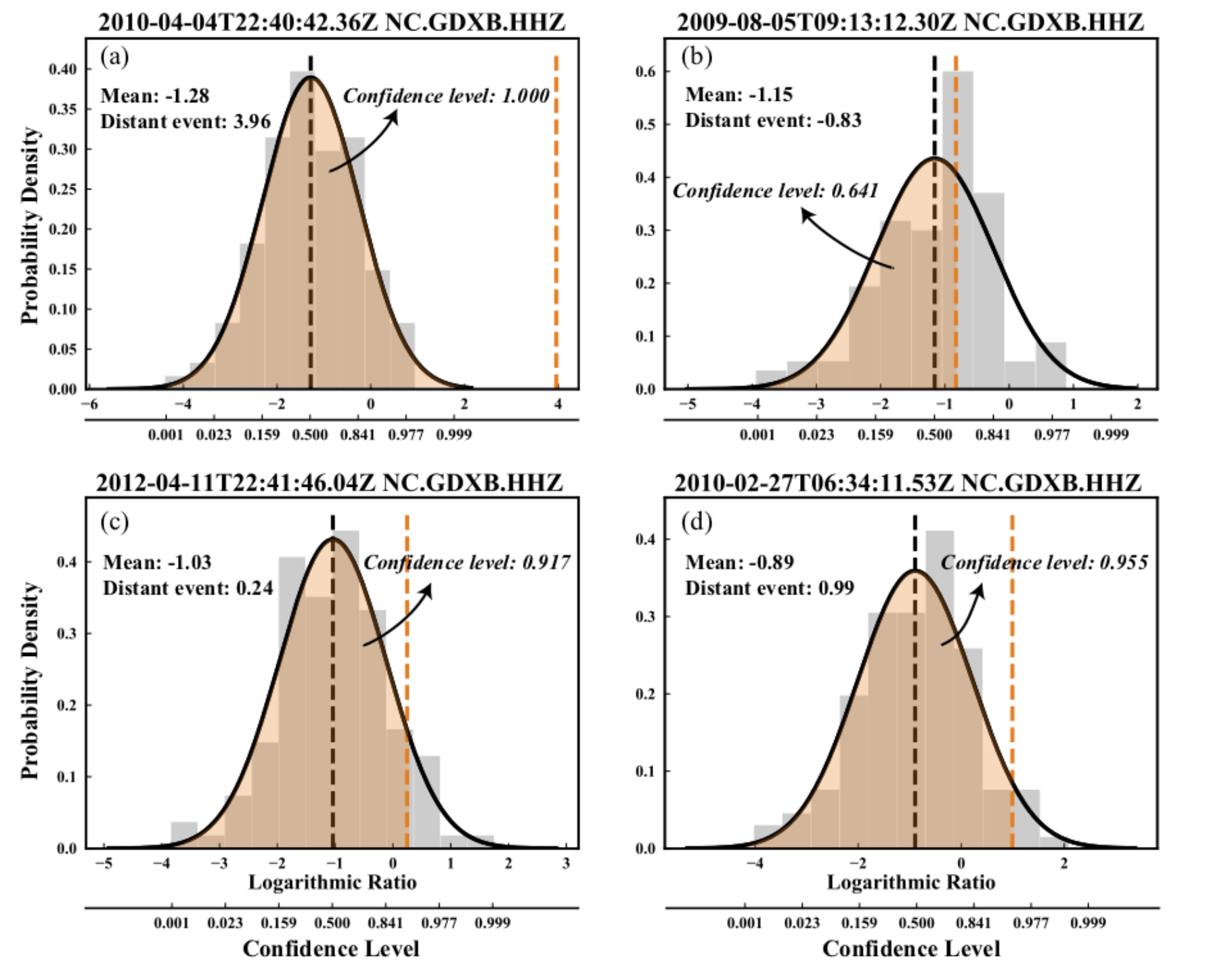Shiyong Zhou’s team developed new method of automatic dynamic triggering detection
2020-07-10
Dynamic triggering of earthquake is related to dynamic stress change of teleseismic waves. This phenomena is one of earthquake interaction mechanisms which is important for our understanding of earthquake physics. Earthquake dynamic triggering can be used to monitor the temporal variation of stress status thus can be used as an probe to estimate strong earthquake hazards. The existing dynamic triggering methods are limited by high time expenses, and can not be used for large amounts of cases. Systematic research of the temporal and spatial variations of dynamic triggering on large-scale station networks is difficult to be carried out. Based on the fact that the triggered local earthquake corresponds to high-frequency energy in seismograms, Prof. Zhou Shiyong’s group proposes a new automatic detection algorithm that is suitable for massive data and are not sensitive to subjective selection of detection parameters, named HIgh‐Frequency power Integral ratio (HiFi).
The HiFi algorithm makes use of the high frequency energy spectrum ratio before and after the teleseismic arrival and compare that with the back ground energy spectrum distribution at the same daily time. An outlier from the back-ground distribution indicates the observed high-frequency energy after teleseismic arrival are not likely to be explained by the daily activities. These high frequency contents are associated with locally trigger seismic activities (Figure 1).

Figure 1. Comparation between RB and RE at Station GDX/GDXB in Geysers for four remote earthquakes (Yun et al., 2019). In each panel, the histogram shows the probability density of RB values. The black solid line is the probability density function (PDF) acquired by fitting the data set to a normal distribution with the mean indicated by the black dashed line. The orange dashed line marks the RE value for the distant earthquake. The mean of the PDF and RE value are given in the upper left in each panel. The orange shaded area enclosed by the PDF curve and the orange dashed line is the CL value of dynamic triggering, which is shown on the bottom axis corresponding to different RE values.
This research is published on Geophysical Research Letter with Yun Naidan (first-year graduated student of Peking University) as the first author, and Profs. Zhou Shiyong (Peking University, PKU) and Yang Hongfeng (The Chinese University of Hong Kong, CUHK) as corresponding authors. The seismic data are obtained from the Northern California Earthquake Data Center (NCEDC) and Advanced National Seismic System (ANSS). This work is jointly supported by the National Key R&D Program of China (Grant 2018YFC1503401) and the Hong Kong Research Grant Council (Grant 14305617).
Yun, N., Zhou, S., Yang, H., Yue, H., & Zhao, L. (2019). Automated detection of dynamic earthquake triggering by the High-Frequency Power Integral Ratio. Geophysical Research Letters, 46(22), 12977–12985. https://doi.org/10.1029/2019GL083913
